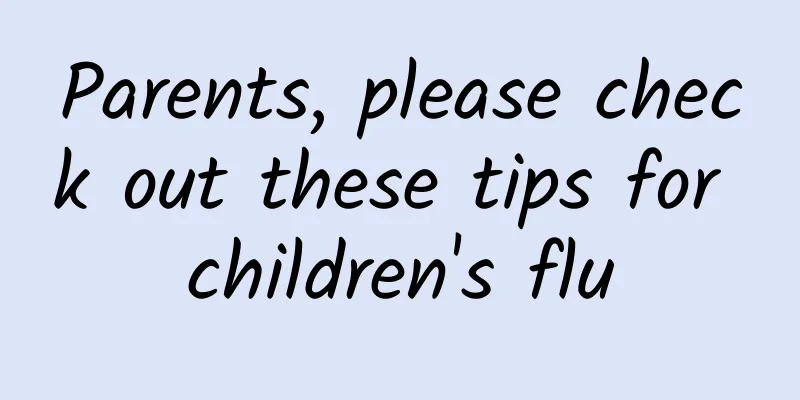Parents, please check out these tips for children's flu

|
During the influenza epidemic season every year, the influenza infection rate among children is 20-30%, and in certain high-epidemic seasons the annual infection rate can be as high as around 50%. Epidemiology of influenza in children <br /> Source of infection: influenza patients; latently infected persons. Clinical manifestations of influenza in children <br /> Influenza in children usually starts suddenly. The main symptom is fever, which can be as high as 39-40℃, accompanied by chills and shivering. It is often accompanied by headache, body muscle aches, fatigue, loss of appetite, and often accompanied by cough, sore throat, runny nose or nasal congestion, nausea, vomiting, etc. Differential diagnosis of influenza and common cold Flu treatment for children Symptomatic treatment: Children with high fever can be cooled physically and treated with antipyretic drugs. Children with severe cough and sputum can be given antitussive and expectorant drugs. Oxygen therapy should be given in an appropriate manner according to the degree of hypoxia. Antiviral treatment: Children with severe illness or high risk factors for severe influenza should start anti-influenza virus drug treatment as soon as possible within 48 hours of onset. Early treatment can achieve better clinical results, but antiviral drug treatment 48 hours after the onset of flu-like symptoms also has certain clinical benefits. Antiviral therapy Prevention of influenza in children Flu vaccination <br /> Annual flu vaccination is the most effective way to prevent the flu. Influenza drug prevention <br /> For children who meet the indications for preventive medication, it is recommended to take oseltamivir early (as far as possible within 48 hours after exposure) and continue to take the drug until 7-10 days after the last exposure. Non-drug intervention measures <br /> Wash hands frequently, ventilate frequently, keep warm, and wear a mask. References Contributor: Pharmacy Department Author: Chief Pharmacist Reviewer: Chief Pharmacist Sun Yanyan Chief Pharmacist Yu He |
<<: Are probiotics effective for preventing urinary tract infections in children?
>>: Twitter's Long Run and Its Apprentices – Infographic
Recommend
What happens if a pregnant woman stands for a long time?
We all know that the physical condition of pregna...
What is the best way to treat cervical erosion?
Nowadays, the number of patients with cervical er...
Early detection and early cure of breast cancer. Women should never ignore these five abnormalities of the breast
If we do not pay attention to some living habits,...
Is it easy to get pregnant if you have sex right after your period? What should you do?
Many female friends will ask a question about the...
Subtle insights from the window of childhood: revealing the secrets of atrial septal defect
Author: Zhang Xin, Chief Physician, Beijing Child...
Can I take a shower after a miscarriage?
Pregnant women are generally very happy, but if t...
Why do girls have cold hands and feet in summer?
There are many reasons for women's cold hands...
High mortality rate and high metastasis rate! Remember the five self-examination methods to stay away from melanoma
On June 14, 2023, "melanoma" became a h...
What to do if you have urinary tract pain in women
Urinary tract infection is a common disease among...
How to treat dry and itchy female private parts?
Caring about women's health is one of the iss...
Back pain during pregnancy
It is normal to have back pain in the 9th month o...
Complete picture of the early symptoms of anal eczema in women?
Eczema is one of the more common skin diseases. T...
Latest research: Sunbathing can prevent dementia! But too much or too little sun exposure can cause dementia!
The team led by Professor Yu Jintai from Huashan ...
What is the cause of the hard lumps in the breast during weaning?
Many women are prone to breast lumps during breas...
How many days after laser freckle removal can I wash my face? Let you know the real situation
First of all, it should be made clear that you ca...









